| Umělec 2006/1 >> SWEET TABOOS in Tirana – 3rd Tirana Biennale | Просмотр всех номеров | ||||||||||||
|
|||||||||||||
SWEET TABOOS in Tirana – 3rd Tirana BiennaleUmělec 2006/101.01.2006 Alban Muja | info | en cs |
|||||||||||||
|
Conceptually, the Tirana Biennale was billed as an exploration of taboos in contemporary society with an effort to test them artistically using an Albanian backdrop. Practically, this international festival of exhibitions appears as a masterpiece of what people can do on a shoestring. Perhaps it is the very absence of massive external cultural financing that this show could be the creative construction that it became. The first Tirana Biennale was produced in 2001 with Edi Muka in cooperation with Flash Art Magazine and its publisher, Giancarlo Politi. The second was produced without Politi. Muka explains that the Prague Biennale of 2003 was originally planned as a second “Tirana Biennale, in Prague,” before the event was finally repackaged as the First Prague Biennale. Meanwhile, Edi Muka that year produced a second Tirana event in cooperation with the City of Tirana. In producing this third Tirana Biennale, Edi Muka has gained the legal rights to the “Tirana Biennale” logo, and by all accounts, has produced a masterpiece that includes local and international artists working effectively with the regional landscape. In an art culture clinging desperately to a vaguely market existence, the taboo, may well be the existence of such creative enterprises.
Alban Muja attended some of this Biennial’s events, and describes what impressed him most as he sought to ”go inside.” The program for the third Biennial was planned in reverse, culminating in a finisage, an event that highlighted the process of creation evolving over the course of a month and a half, in the Autumn of 2005. In this sense, the fifth and final ”episode” of the third Tirana Biennale was presented as the beginning of the entire event: an apt introduction to a biennial that from the beginning suffered multiple financial setbacks that tested the organizers determination to see it through. The presentation, however, represented solid evidence that in the Balkans good artistic happenings have limited financial means. Even with these obstacles, the ”Tirana Biennale 3,” managed to assemble a considerable number of great artists and artworks. With the subversive title ”Sweet Taboos,” the event differed from the preceding two, and was divided into ”episodes.” The first episode, by the name of ”Temptations,” was presented by the curating duo of Edi Muka and Gëzim Qëndro, who also organized this entire Biennale; in doing so, they located the show outside of institutional settings to the basement of an unfinished building in the ”Goldi” complex. Icons of Albanian communist art could be easily distinguished in their selection, for example, the painting of Guri Madhi, The Communist Congress of 1981. Some of the other artists who participated in this episode were Phil Collins, Sejla Kameric and Muhammed Hamid, who in his video-work, Vocabulary of Violence, presented a man who mentions the names of various types of weapons in a particular manner indicating his involvement in some conflict in Afghanistan. In the second episode, entitled, ”To Lose Without Being a Loser,” the Italian curator Roberto Pinto arranged the artworks in the ”Underground” ambient of the ”Goldi” complex. The artists invited included were Tani Bruguera, Jota Castro, Maja Bejovic, Nedko Solakov, and Jimmie Durhan. The most remarkable work was Stefano Romano’s project for a bridge connecting Albania to Italy. As part of the work, people were told that construction for such an improbable bridge was set to commence in 2009, and were asked for their opinion; few considered the absurdity. Differing from the preceding episodes, the third, “Democracies”, curated by the Slovenian, Zdenka Badoivinac, returned to the ”ancient” spaces of the National Gallery of Arts. Her curatorial concept is presented through the works of artists as Marjetica Potrec, Armando Lulja, and Huseyin Aptekin. The fourth episode, by the name of ”Bittersweet,” also took place in the ambient of the ”Goldi” complex. The artists who were invited in this episode, through their works, treated sex as a ”tool” for economical power and also as an effective ”tool” for war and conflicts. Four international artists were invited, Mario Rizzi, Monica Mellin, Joanna Rytel, and an artist from Kosovo, Erzen Shkololli, whose video-work, Kanagjeçi, showed a traditional wedding ceremony of a girl from a Roma family. One of the artists invited by the curator Ljunberg for this episode was also Suela Qoshja, who won the AMC (Albanian Mobile Communication) award for Albanian artists with her work Avenue of the Stars. She brought to this episode a series of photos that conceptually stands between what seems like growing fear and the attempts to get control over the situation through understanding who stands in front of her. Going Inside The fifth and final episode ,”Go inside,” was presented at the end of October 2005 by the Chinese curator Hanru Hou, who implies a return to a collective memory, with this episode. Culminating the four previous episodes, where curators offered artistic approaches toward taboos, the Chinese artist chose the taboo of history. The works of 25 artist, the majority of whom come from ex-communist countries and now pursue their careers in Europe, are now among the mainstay collections of the gallery’s pavilions. Albanian “Heroism” showed through the paintings of artists who no longer live, displayed in a green room combining the photos and projections offered by the Chinese artist Cao Fei who shows the destruction of a dictator’s monument. A notable piece in this episode, by the Russian group of artists, AES, happened to be the one which was placed right at the entrance of the gallery with Bin Laden dressed as an astronaut trying to shove a flag adorned with golden Arabic script into America. This is modern history, which together with power, loss, democracy and sex creates the puzzle of “sweet taboos” in contemporary society. Most shocking to the public in the opening of the fifth episode was the performance of the Chinese artist H.H.Lim who nailed his own tongue to a table. Here he uses words where the tongue’s verbal functions are combined with various visual semantics and vice versa. Another provoking performance was by the artist Regina Jose Galindo, who suspended her self for more than one hour in order to complete her work on the subject of menstruation. Hanru argues that contemporary art must co-opt with the traditional. Albania, along with other traditional countries, must integrate. One of the sweetest taboos, for Hanru, is history, the most recent one. With this in mind the Chinese curator built the fifth and last episode of the Tirana Biennale. This edition, like the earlier ones, welcomed a large number of visitors. Muka as director of the Biennale, estimated that the manifestation welcomed more than seven thousand visitors.
01.01.2006
Рекомендуемые статьи
|
|||||||||||||
|
04.02.2020 10:17
Letošní 50. ročník Art Basel přilákal celkem 93 000 návštěvníků a sběratelů z 80 zemí světa. 290 prémiových galerií představilo umělecká díla od počátku 20. století až po současnost. Hlavní sektor přehlídky, tradičně v prvním patře výstavního prostoru, představil 232 předních galerií z celého světa nabízející umění nejvyšší kvality. Veletrh ukázal vzestupný trend prodeje prostřednictvím galerií jak soukromým sbírkám, tak i institucím. Kromě hlavního veletrhu stály za návštěvu i ty přidružené: Volta, Liste a Photo Basel, k tomu doprovodné programy a výstavy v místních institucích, které kvalitou daleko přesahují hranice města tj. Kunsthalle Basel, Kunstmuseum, Tinguely muzeum nebo Fondation Beyeler.
|







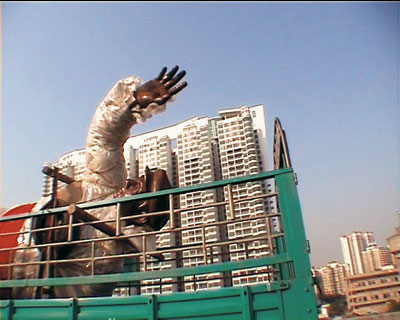




















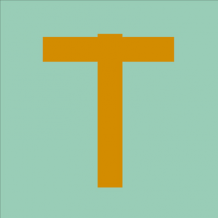
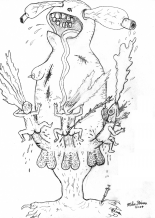
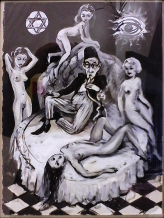
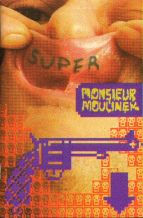


 We Are Rising National Gallery For You! Go to Kyjov by Krásná Lípa no.37.
We Are Rising National Gallery For You! Go to Kyjov by Krásná Lípa no.37.
Комментарии
Статья не была прокомментированаДобавить новый комментарий